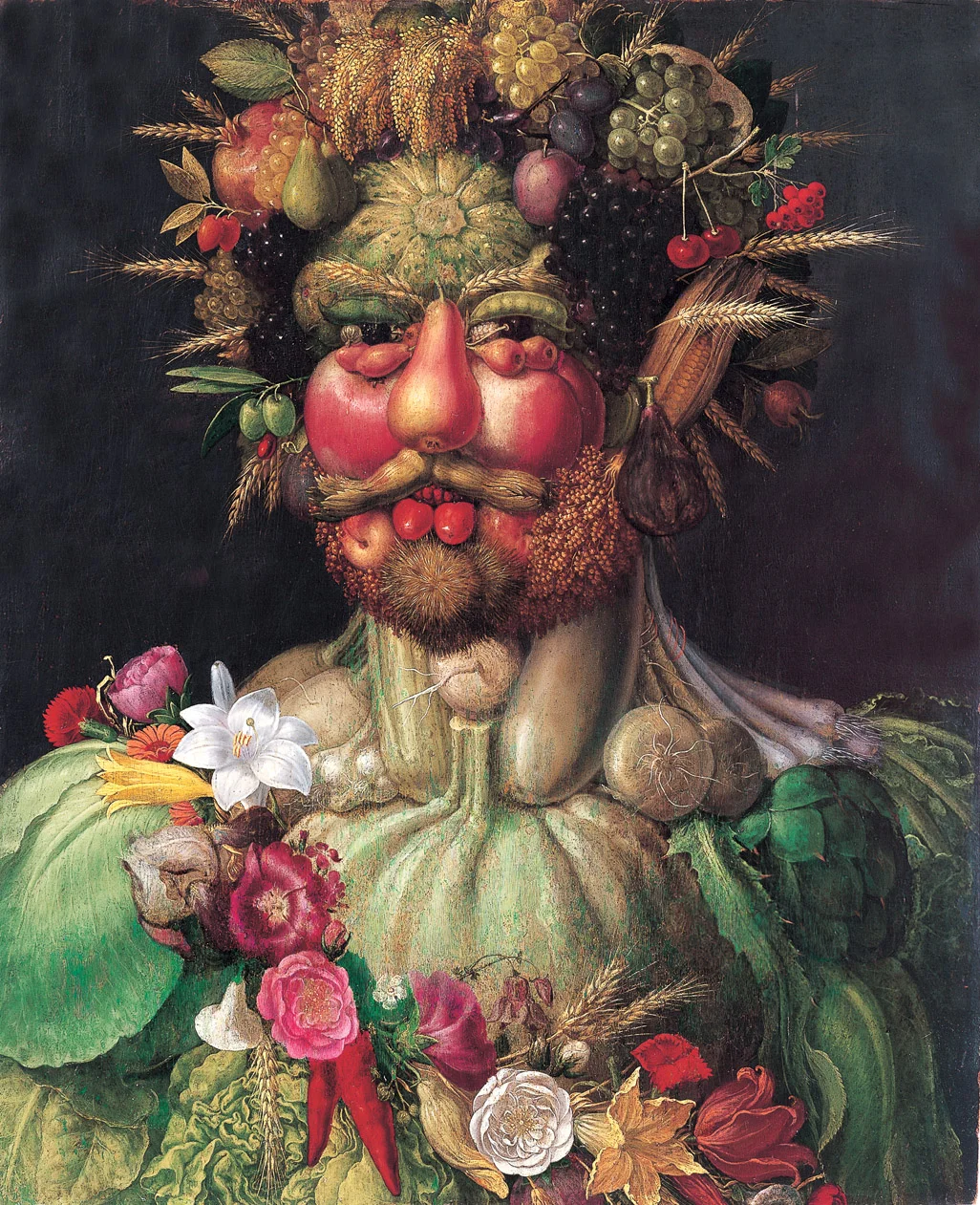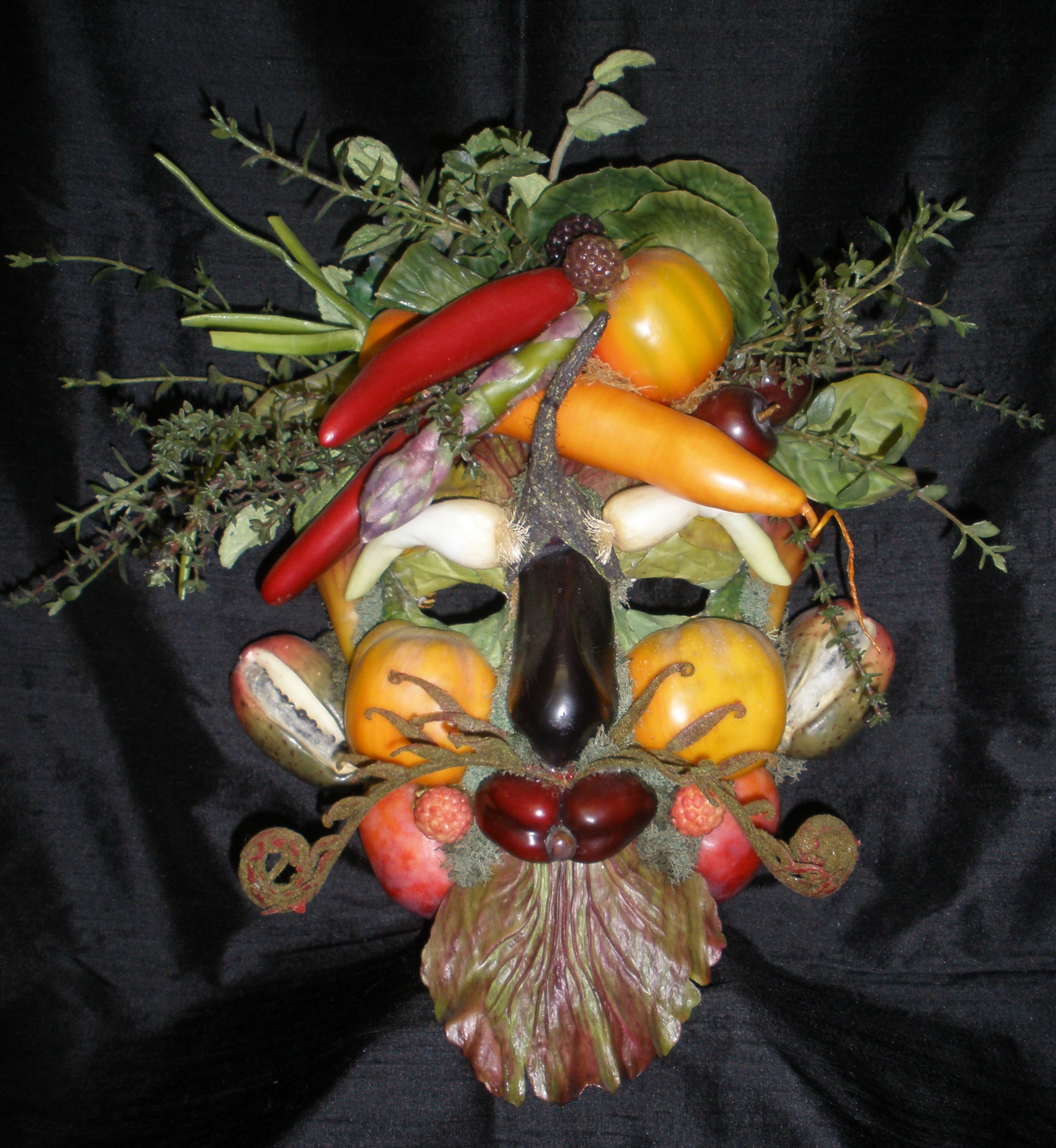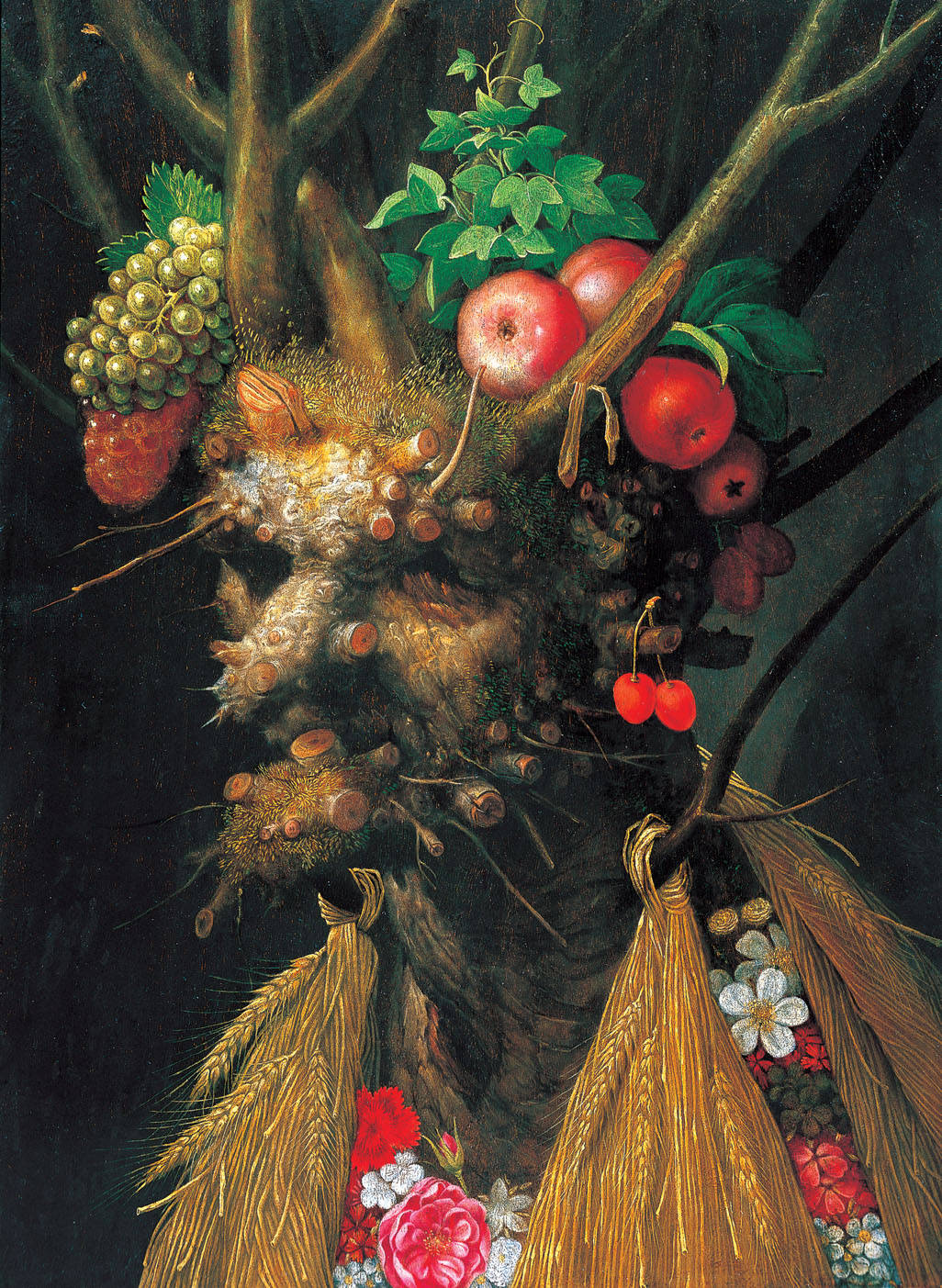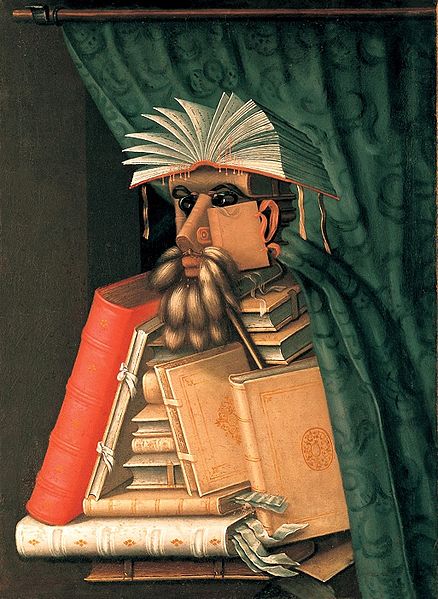The Arcimboldo Effect
I spend stupid amounts of time manipulating photographs / teaching others how to do the same, and it's good to know my history. I got it in my head that I'd do a series reworking some of the classics out of tree branches, and it sent me on a bender of who's done this in the past.
Arcimboldo (1527-1593) is considered the original Hidden Face Artist, and everything he did, and many things he inspired are fascinating.
People forgot about the guy for centuries until Salvador Dali dug him out of the archives and started referencing him.
It's remarkable how Arcimboldo is one of the few early Renaissance artists that would still fit right in to a magazine like Juxtapoz.
Above is the same piece, both upside down and forward up. If you turn most of his 'still lives' upside down, you'd have no idea they were representational of something.
Beyond how great his own work is, the various copy cat artists that he inspired both directly and indirectly take it to the next level.

This piece is a fantastic sculpture by Philip Haas of the painting above, 'Winter.'

Gives a sense of scale for the size of the sculpture.
It becomes a completely different piece of art with new framing.
'Spring' also inspired others.
Klaus Enrique Gerdes took a literal approach.
While Bernard Pras mostly rearranges garbage.
Some more pieces by Barnard Pras.
Joel Peter Witkin sticks to the theme of vegetable heads, but makes it his own.
Istvan Orosz is great above, while people like Octavio Ocampo are far less subtle. Attempting to make a head out of nature can look truly awful if not handled with care.
This is a lot of fun, but misses the subtlety - It doesn't work as two separate images, and isn't hidden if spun upside down. More than that, it feels like a copy. The question for artists post Arcimboldo is how to add to the conversation, and one up what's come before.
Arcimboldo set the standards high with images like these three:
Here's a few more directly inspired by Arcimboldo, but taking it in a modern direction.
 Here's a pdf on the making of Salad by Till Nowak - remarkable work.
Here's a pdf on the making of Salad by Till Nowak - remarkable work.
What I love about this style is that there's no limit to what can be done with it. It's basically anything combining to form something it's not meant for. When done right, it's breathtaking.
Colossal frequently posts on artists working in this style, and it's well worth checking out.

![Arcimboldo.water[1]](http://static.squarespace.com/static/52486462e4b05a24380de175/53812b75e4b030941c1b2622/53812b78e4b030941c1b2900/1322411905000/Arcimboldo.water1_.jpg?format=original)
















